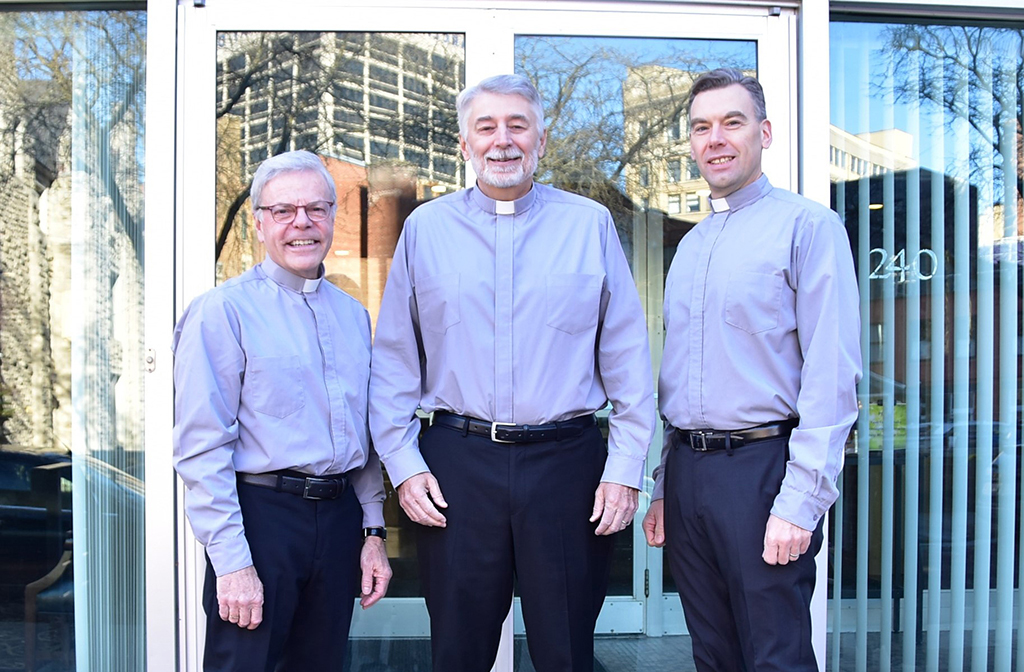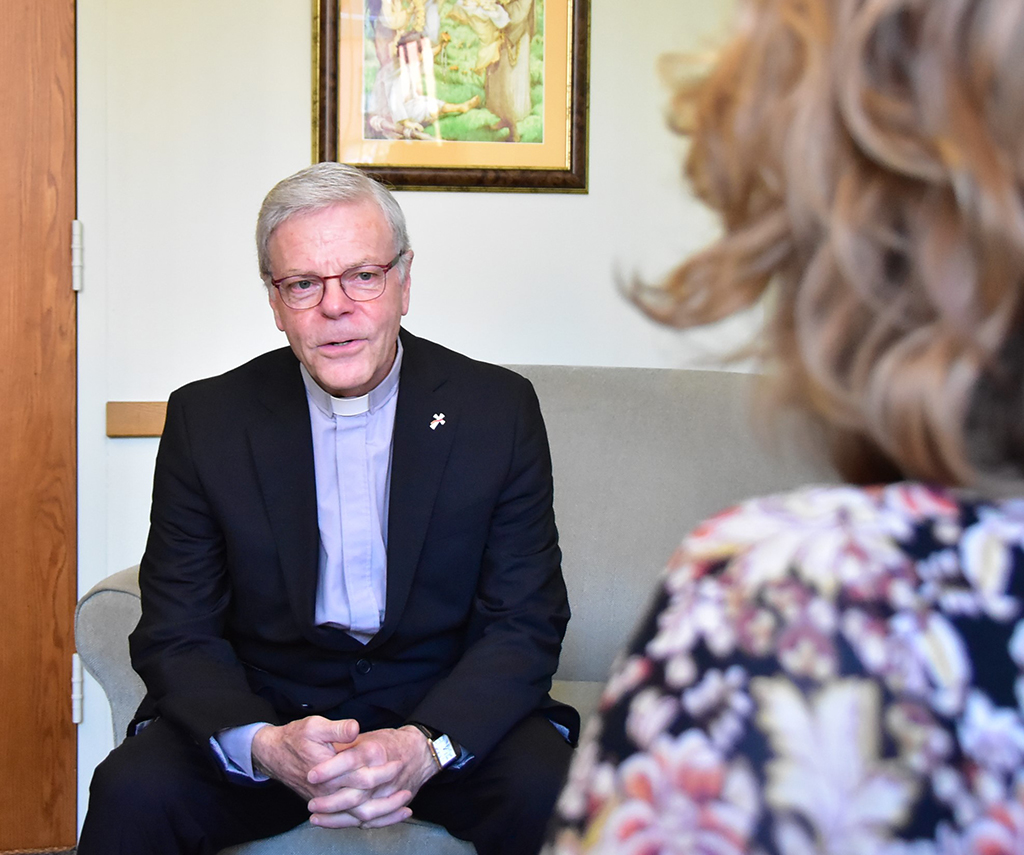Diocesan deacons adopt new clerical shirt policy
By Dc. Tom Cuskey
December 1 marks the beginning of a new liturgical year as the universal Catholic Church commences its observance of Advent. In the Diocese of Syracuse, the new year will also usher in a new practice among our deacon community. A very noticeable practice.
Your parish deacon will soon be more easily recognized as he will be wearing a grey clerical shirt with a white clergy collar insert, a ‘Roman’ collar as many Catholics have referred to it over the years. A new policy will be implemented that overall states that deacons will wear the grey clerical shirt when in performance of their duties and functions as a member of the Church’s clergy.
“It’s meant to highlight the role of the deacon,” Bishop Douglas J. Lucia stated at a meeting of his Diaconal Council over the summer. “It also is a step forward, as I’m looking at diocesan planning and the whole idea of the leadership role.”
The Diaconal Council is made up of one deacon representative from each of the seven diocesan vicariates, along with representatives for the retired, newly ordained deacons and deacon wives. Like the Presbyteral Council representing the priests, the Diaconal Council is an advisory team that serves the bishop.
The leadership role that Bishop refers to represents a growing need as priests continue to be stretched thin in running multiple parishes. Deacons and qualified lay men and women will be increasingly called on to assist as parish life directors.
The introduction of the clerical shirts will help to draw special attention to the deacons and their unique leadership and ministerial role in the Church through the Sacrament of Holy Orders.
From the deacons’ perspective
Deacon Robert Fangio serves as diocesan director of Deacon Personnel in addition to his role as a parish deacon at Holy Family Church in Syracuse. He supports the bishop’s efforts to raise the awareness of the deacon’s role in leading congregations.
“That symbol [the clerical shirt] is very important to people, and it does show that unified commitment, to service and faith that our church, our Catholic Church, conveys,” he said. “There’s that part of it, where you are ministering in the hospital, in a nursing home, in a vigil service.”
A policy articulating when and where a deacon should be expected to wear a clerical shirt has been decided upon by the Bishop and the council. Jail ministry, for example, has long carried the stipulation that all clergy, priests and deacons wear clerical garb when making visits. Now, settings such as hospitals, nursing homes, homebound visits and serving at the parish will also be, with others, on the deacon’s must-wear list.
The Diocese of Syracuse is certainly not alone in this practice.
“Many dioceses in New York state already have deacons wearing clerical attire and this has been something that the Diocese of Syracuse has looked at for a number of years,” Fangio said. He added that there has been more consistent discussion in recent years as the clergy personnel situation has evolved. “It’s been out there in conversation, to the point where the Diaconal Council brought this to the bishop to see if we could consider it again. And Bishop Lucia was open to that. And that’s what’s brought us here.”
Fangio realizes that, while it will be a change for the faithful in the pews, it’s also a big adjustment for the deacons, changing the visual impact of their ministry in the parish but among the greater community as well.
“I think it’s important for our community, our diocesan community, to realize that we are clergy,” Fangio said. “I have to respect the fact that this is something that the deacons will have to really grow into to realize what their feelings are about it. Right now, it’s very new, and I think that some of them are approaching it with a bit of caution.”
Fangio knows, though, that the benefits far outweigh any doubts.
“It gives us an opportunity to be more visible, to have that symbol of commitment to service, love and faith that our priests are already showing. With our deacons being ordained as well, it’s bringing us together as clergy in a more unified way.”


No comments:
Post a Comment